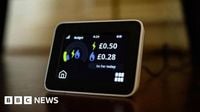As the chill of autumn settles in across the Northern Hemisphere, households and businesses from Rochester, New York, to the United Kingdom, and as far as Pakistan, are bracing for a season of rising energy bills. The latest reports point to a wave of price hikes, regulatory changes, and consumer anxieties that underscore the global nature of the energy affordability crisis in 2025.
In Rochester, N.Y., the National Energy Assistance Directors Association (NEADA) has sounded the alarm: heating bills are expected to surge by an average of 7.6% this winter, according to WROC. That means the average winter electricity cost will jump from $1,093 last year to $1,205 this year—a hefty increase for many families already feeling squeezed by inflation and other rising costs. While the city’s residents are just beginning to feel the first bite of fall, the prospect of higher utility bills looms large.
Experts stress that there are steps households can take to cushion the blow. Luke Giannone, Founder and CEO of Triple-O Mechanical, emphasized the importance of regular furnace maintenance and upgrades. “As heating costs go up and the cost to heat your home goes up, the only way to really combat that is to upgrade to a higher efficiency furnace, to get your furnace cleaned, inspected on the low end so that it’s running as efficiently as it can,” Giannone told WROC. He added, “But moving to a newer unit that’s got higher efficiencies is going to burn that fuel more efficiently and lower your utility bills by 10 to 20%, depending on how old the furnaces that you have.”
Aside from efficiency, safety is paramount—especially as winter approaches. “We can’t stress enough how important it is to have your furnace cleaned seasonally, for safety’s sake,” Giannone said. Carbon monoxide, often dubbed the silent killer, can pose serious risks if furnaces and sensors aren’t properly maintained. Replacing batteries in carbon monoxide detectors and changing air filters are simple steps that can make a big difference.
For those struggling to pay their bills, programs like HEAP (the Home Energy Assistance Program) offer a lifeline. Eligible Rochester residents can receive benefits ranging from $21 to over $900 to help offset heating and cooling costs, according to WROC. It’s a crucial support system at a time when every dollar counts.
Across the Atlantic, energy consumers in the United Kingdom are facing their own set of challenges. Click Energy, a supplier serving around 33,000 households, announced its first price increase in over three years—a 3.5% hike effective November 1, 2025. According to the BBC, this will push the typical annual electricity bill for credit customers from approximately £1,141 to £1,171, with prepayment customers seeing costs rise to around £1,181.
Andy Porter of Click Energy acknowledged the frustration customers feel: “Any increase in energy prices is disappointing and not something customers ever want to hear. Unfortunately, the sustained rise in wholesale and market costs means it has become necessary for us to adjust our rates accordingly.” The company maintains its commitment to transparency and customer support, but the reality is that higher costs are being passed on to consumers.
Raymond Gormley, head of energy policy at the Consumer Council, echoed these concerns, noting that “the main drivers for this are rising wholesale and market related charges.” He encouraged customers to review their payment methods and explore ways to reduce costs. In a landscape of rising prices, even small changes in payment plans or energy usage can add up.
The Click Energy announcement comes on the heels of similar moves by other providers. Power NI recently increased its electricity tariff by 4% following a review by the Utility Regulator, marking its second hike in less than a year. Meanwhile, there was a rare bright spot: SSE Airtricity announced an 8.47% drop in gas prices for Greater Belfast and the West, offering some relief to affected households.
But the broader trend is clear—energy costs are on the rise, and many are being forced to rethink how they manage their bills. This is especially true as the UK’s energy regulator, Ofgem, raised its price cap to £1,755 per year for a typical household from October 1 to December 31, 2025, according to BirminghamLive. While the 2% increase from the previous cap of £1,720 may seem modest, it hits just as households ramp up heating and lighting for the winter months.
Analysts at Cornwall Insight predict a brief respite in January, with the cap expected to fall back to £1,725, but warn it may climb again in April. The message from energy experts is clear: now is the time to act. Households are being urged to switch to fixed-rate tariffs, with potential savings of up to £292 per year compared to the current price cap. Richard Neudegg, director of regulation at Uswitch.com, called the October increase “a wake-up call for households on price cap-linked tariffs to lock in cheaper fixed rates to cover the critical winter period.”
“The cost of doing nothing now means an extra £76 per month on average for energy bills from October to December, on top of rates already higher than the majority of fixed tariffs,” Neudegg explained. With around 27 fixed deals available that beat the new cap, and more than a third of households having already switched, the push for proactive consumer action is stronger than ever.
While residential customers in Western countries grapple with rising costs and market volatility, the situation in Pakistan’s industrial sector is reaching a boiling point. On October 13, 2025, the Federation of Pakistan Chambers of Commerce and Industry’s Businessmen Panel (FPCCI BMP) issued a scathing critique of the government’s recent imposition of inflated gas bills on industry, as reported by The Nation.
Mian Anjum Nisar, chairman of the BMP and former FPCCI president, accused authorities of charging factories peak-hour rates—nearly double or even two and a half times higher than agreed off-peak tariffs. “The gas bills being sent to industries are calculated at peak-hour rates, which are nearly double or even two and a half times higher than the off-peak tariff that should have been applied,” Nisar stated. He warned that this practice threatens to cripple the industrial sector, potentially leading to factory closures, massive job losses, and a decline in Pakistan’s export competitiveness.
Nisar rejected the government’s justification that these billing practices were mandated by the International Monetary Fund (IMF). “The IMF has called for fiscal discipline and reforms but has never mandated the indiscriminate application of peak-hour tariffs that punish industrial consumers,” he said. Instead, the BMP is calling for immediate reforms, including the implementation of a uniform 24-hour tariff system and transparent billing practices.
The stakes are high. Export-oriented sectors such as textiles, chemicals, and manufacturing are already under pressure from rising input costs. Inflated energy bills only add to the burden, threatening both economic stability and the livelihoods of thousands of workers. Nisar emphasized, “When factories close or reduce production due to soaring costs, it directly translates into job losses and increased poverty.”
The BMP’s stance echoes earlier warnings from other business groups, all urging the government to act swiftly to prevent further damage to Pakistan’s industrial base. The call for dialogue and pragmatic policy solutions remains urgent, as delays could deepen the crisis and erode the country’s competitiveness on the global stage.
From Rochester’s chilly neighborhoods to the factories of Lahore, the message is the same: rising energy costs are reshaping household budgets, business strategies, and even national economies. As winter approaches, the search for relief—whether through efficiency upgrades, government assistance, or regulatory reform—has never felt more urgent.



